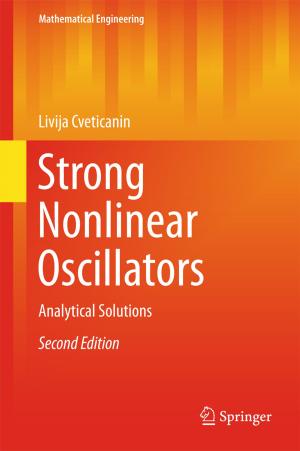Patient-Derived Xenograft Models of Human Cancer
Nonfiction, Health & Well Being, Medical, Specialties, Oncology| Author: | ISBN: | 9783319558257 | |
| Publisher: | Springer International Publishing | Publication: | June 27, 2017 |
| Imprint: | Humana | Language: | English |
| Author: | |
| ISBN: | 9783319558257 |
| Publisher: | Springer International Publishing |
| Publication: | June 27, 2017 |
| Imprint: | Humana |
| Language: | English |
This book provides a comprehensive, state-of-the-art review of PDX cancer models. In separately produced chapters, the history and evolution of PDX models is reviewed, methods of PDX model development are compared in detail, characteristics of available established models are presented, current applications are summarized and new perspectives about use of PDX models are proposed. Each chapter is written by a world-renowned expert who is conducting cutting-edge research in the field. Each of the subsections provide a comprehensive review of existing literature addressing the particular topic followed by a conclusive paragraph detailing future directions. Extensive illustrations make this an interactive text.
Patient-Derived Xenograft Models of Human Cancer will serve as a highly useful resource for researchers and clinicians dealing with, or interested in, this important topic. It will provide a concise yet comprehensive summary of the current status of the field that will help guide preclinical and clinical applications as well as stimulate investigative efforts. This book will propagate innovative concepts and prompt the development of ground-breaking technological solutions in this field.
This book provides a comprehensive, state-of-the-art review of PDX cancer models. In separately produced chapters, the history and evolution of PDX models is reviewed, methods of PDX model development are compared in detail, characteristics of available established models are presented, current applications are summarized and new perspectives about use of PDX models are proposed. Each chapter is written by a world-renowned expert who is conducting cutting-edge research in the field. Each of the subsections provide a comprehensive review of existing literature addressing the particular topic followed by a conclusive paragraph detailing future directions. Extensive illustrations make this an interactive text.
Patient-Derived Xenograft Models of Human Cancer will serve as a highly useful resource for researchers and clinicians dealing with, or interested in, this important topic. It will provide a concise yet comprehensive summary of the current status of the field that will help guide preclinical and clinical applications as well as stimulate investigative efforts. This book will propagate innovative concepts and prompt the development of ground-breaking technological solutions in this field.















